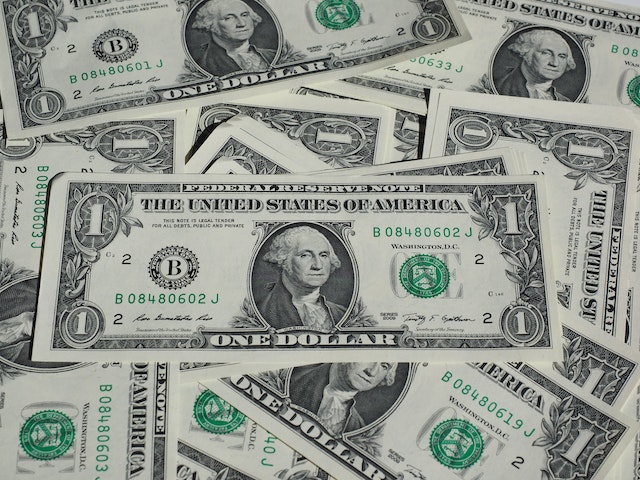
Why does the USA use the dollar? Because, in the early days of the American colonies, the Spanish dollar was more prevalent than the British pound.
There are twenty countries around the world that have a dollar as their currency. The symbol for the majority of them is the $ sign with possibly letters before it to differentiate it from the US dollar. For example, AU$ is the Australian dollar.
The word dollar comes from the Bohemian (Czech) word thaler. This in turn was a shortened form of the place name Joachimsthal. During the early 16th century, overseas exploration and various reforms in society and agriculture brought a lot of prosperity to Europe. The rapidly increasing economy needed more silver to cast coinage. Count Hieronymus Schlick of the Kingdom of Bohemia, which is now the Czech Republic, started to mint coins from its silver mines in Joachimsthal. The word was a little hard to pronounce, so it became thaler in German, dólar in Spanish, daalder in Dutch, and dollar in English. The coins, and the word, gradually spread across Europe and then into their colonies.
Throughout the 16th and early 17th century, Spain was the dominant power, and the Spanish dólar became the main currency for international trade. Britain founded its first settlement in North America in 1587. From there, they gradually increased their presence until they had the 13 colonies that would become the United States of America. Because these colonies were British colonies, there were bound to use the currency of Britain, which was the pound, shilling, and pence, at the time. 1 pound was worth a pound of silver. That was divided into 20 shillings and 1 shilling was 12 pence, or 240 pence to a pound.
Using the currency of Britain made sense, except for three problems. The first was that there was no standard value of the pound in America. The British currency was worth a slightly different rate in different states, and all of the pounds in the colonies were worth less than British pounds. The second problem was that Britain withheld the currency in order to control the colonies. There was often a shortage of British money. The third problem was that there were far more Spanish dólars moving around the American colonies than pounds, pence, and shillings. The colonists had to make do with whatever currency they had and that was usually the Spanish dólar.
There were several reasons why the Spanish dollar was so popular. The silver for it came from the mines in the Spanish colonies of South America and the purity was higher than that of any other currency. The coins also had a milled edge, which made it possible to see if they’d been cut or altered. The governments of the 13 colonies weren’t allowed to mint their own currency, so they often stamped their state’s mark onto the Spanish coins. Sometimes, the coins would be cut up into 8 pieces in order to make change. This is where the expression “pieces of eight” comes from. It’s also where” bit” comes from. A US quarter these days is known as “2 bits” because it was worth two pieces of a cut up Spanish dollar, which is a quarter.
When the 13 colonies declared independence from Britain in 1776, they had to start creating their own currency. They needed to be able to finance the war they were going to fight and they couldn’t be reliant on any other country’s currency. They decided to start issuing money and began to make money they called Continental Currency. This currency was denominated in dollars. The currency ultimately wasn’t successful because each state had a different version of it and there was no central monetary policy. The British also introduced a huge amount of counterfeit currency in order to try to make the currency fail, an act of economic warfare that almost succeeded.
Just before the end of the war the Continental Currency had collapsed, so the government set up the Bank of North America in 1782 and they issued dollars backed by gold bullion on loan from France. The currency was made official in 1792, with the Coinage Act of 1792, put forward by Alexander Hamilton. Interestingly, the Spanish dollar was also accepted until the middle of the 19th century. It wasn’t possible to remove it until America had a reliable source of silver and gold, which it found with the gold discoveries and gold rush in California in 1848. And this is what I learned today.
Sources
https://dustyoldthing.com/pieces-of-eight-history/
https://en.wikipedia.org/wiki/Spanish_dollar
https://en.wikipedia.org/wiki/Dollar
https://en.as.com/en/2021/09/29/latest_news/1632922119_613188.html
https://mycreditunion.gov/financial-resources/history-united-states-currency
https://en.wikipedia.org/wiki/Early_American_currency
